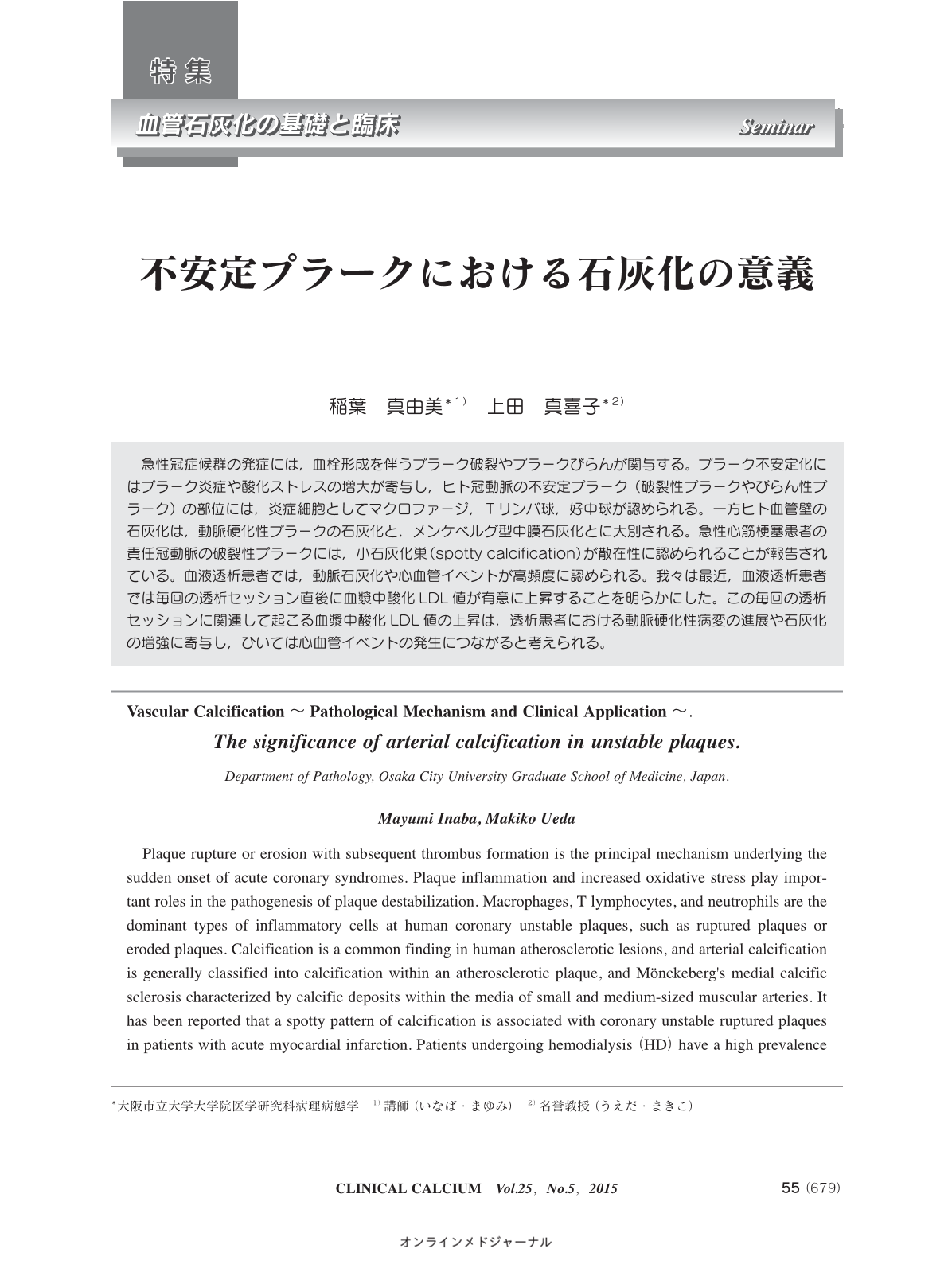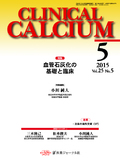Japanese
English
- 有料閲覧
- Abstract 文献概要
- 1ページ目 Look Inside
- 参考文献 Reference
急性冠症候群の発症には,血栓形成を伴うプラーク破裂やプラークびらんが関与する。プラーク不安定化にはプラーク炎症や酸化ストレスの増大が寄与し,ヒト冠動脈の不安定プラーク(破裂性プラークやびらん性プラーク)の部位には,炎症細胞としてマクロファージ,Tリンパ球,好中球が認められる。一方ヒト血管壁の石灰化は,動脈硬化性プラークの石灰化と,メンケベルグ型中膜石灰化とに大別される。急性心筋梗塞患者の責任冠動脈の破裂性プラークには,小石灰化巣(spotty calcification)が散在性に認められることが報告されている。血液透析患者では,動脈石灰化や心血管イベントが高頻度に認められる。我々は最近,血液透析患者では毎回の透析セッション直後に血漿中酸化LDL値が有意に上昇することを明らかにした。この毎回の透析セッションに関連して起こる血漿中酸化LDL値の上昇は,透析患者における動脈硬化性病変の進展や石灰化の増強に寄与し,ひいては心血管イベントの発生につながると考えられる。
Plaque rupture or erosion with subsequent thrombus formation is the principal mechanism underlying the sudden onset of acute coronary syndromes. Plaque inflammation and increased oxidative stress play important roles in the pathogenesis of plaque destabilization. Macrophages, T lymphocytes, and neutrophils are the dominant types of inflammatory cells at human coronary unstable plaques, such as ruptured plaques or eroded plaques. Calcification is a common finding in human atherosclerotic lesions, and arterial calcification is generally classified into calcification within an atherosclerotic plaque, and Mönckeberg's medial calcific sclerosis characterized by calcific deposits within the media of small and medium-sized muscular arteries. It has been reported that a spotty pattern of calcification is associated with coronary unstable ruptured plaques in patients with acute myocardial infarction. Patients undergoing hemodialysis(HD)have a high prevalence of arterial calcification and cardiovascular events. We recently demonstrated that plasma oxidized low density lipoprotein(LDL)levels significantly increased after a single HD session. This HD session-related increase in plasma oxidized LDL levels could contribute to the progression and acceleration of atherosclerosis and arterial calcification, leading to the development of cardiovascular events in HD patients.



